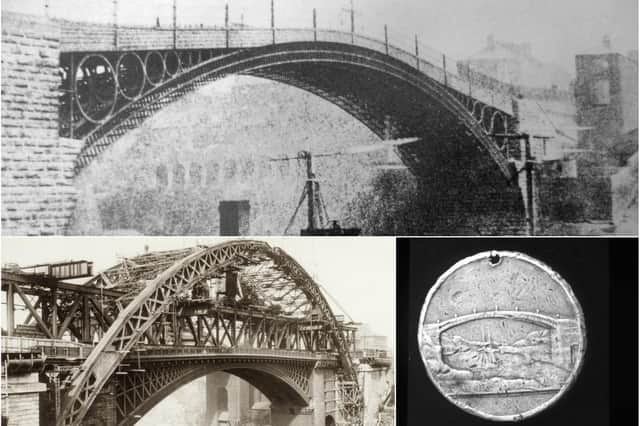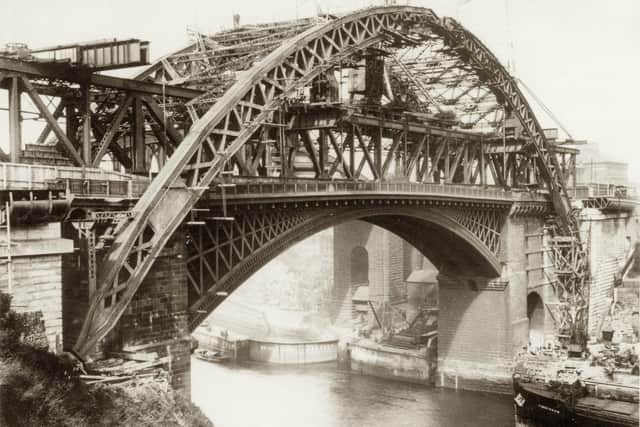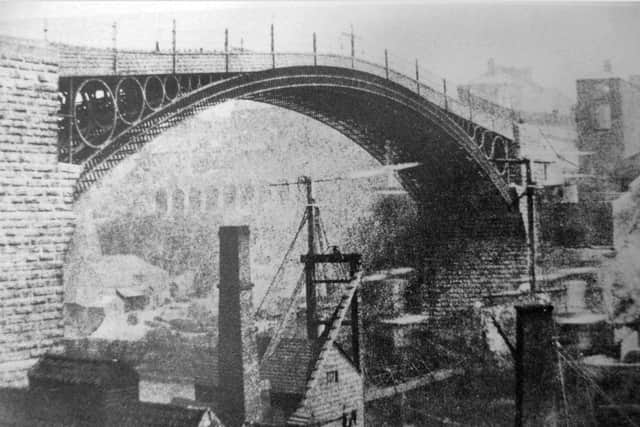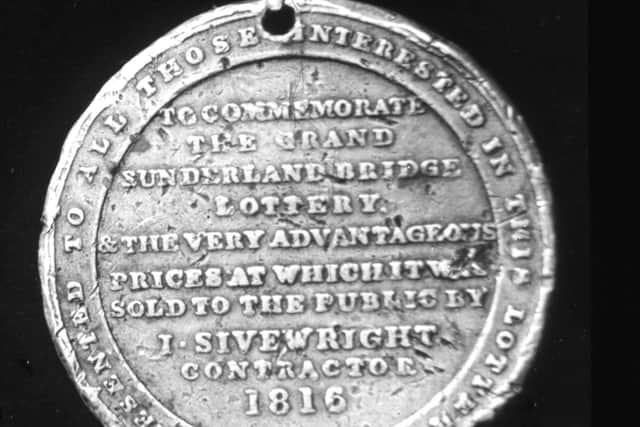Find out more about the Sunderland bridge which had a lottery prize connected to it


The answer is the first Wearmouth Bridge, and local historian Beverley Taylor – the Map Archivist at Sunderland Antiquarian Society – explained more.
“The original Wearmouth Bridge truly was an ingenious piece of engineering,” said Beverley.
Advertisement
Hide AdAdvertisement
Hide Ad“It was designed by Thomas Paine and built under the direction of Thomas Wilson, and it was the longest single-span cast iron bridge in the world, measuring an incredible 236ft.


Reports vary, but between 214 and 236 tonnes of cast iron were used in its construction, as well as 46 tonnes of wrought iron. The height from the low water mark to the bottom of the bridge was 100ft, which would allow the newly built sailing ships to pass freely beneath it on their maiden voyages.”
The bridge was born thanks to an Act of Parliament obtained by Rowland Burdon MP in 1792, when it was felt that the townships of Bishopwearmouth and Monkwearmouth would benefit greatly from the building of a bridge.
“Apart from the ferry crossings,” Beverley said, “The only way to cross the Wear was via New Bridge on the way to Chester-le-Street. A bridge of our own was desperately needed.”
Advertisement
Hide AdAdvertisement
Hide AdThe foundation stone of Wearmouth Bridge was laid on September 24, 1793 and it was officially opened on August 9, 1796.


“As predicted, it made an enormous difference to the town, which simply went from strength to strength,” Beverley said. “A plaque on the bridge today states it ‘proved to be a catalyst for the growth of Sunderland’.”
“But a financial problem led to a rather unique event taking place in relation to the bridge,” Beverley added.
“Burdon was a partner at a bank in Berwick and had advanced £30,000 on the bridge. When the bank failed in 1806, and to avoid any losses, a further Act of Parliament was obtained in order to allow the Bridge Commissioners to sell shares to the public in a lottery. The £30,000 was divided into 150 prizes, with the highest prize being £5,000.
Advertisement
Hide AdAdvertisement
Hide Ad“The draw took place on December 1, 1816 and each of the 6,000 ticket holders was presented with a commemorative medal. The prize winners were given a 5% payment from the bridge tolls, which operated for pedestrians up until 1846 and for vehicles until 1885.”


In 1846, Robert Stephenson, grandson of the famous engineer George Stephenson, reported that the bridge was in sound condition.
However, by 1858, he discovered that there were some serious faults developing and made recommendations that repairs be carried out which included levelling the hump in the middle and widening the bridge.
Alterations began, which cost £40,000, and the new bridge opened on March 5, 1859.
Advertisement
Hide AdAdvertisement
Hide Ad“Following the arrival of the motor car, increased traffic crossing the bridge caused serious overloading and in 1924 it was agreed that the bridge needed to be redesigned once again.”
“Incredibly, the new bridge was built without having to close it to traffic. Once the new structure was in place, the old structure was removed, and the bridge as we know it today finally came into being. It cost £220,000 to build with a further £12,000 spent dismantling the original bridge.”
Wearmouth Bridge was officially opened on October 31, 1929 by the Duke of York, who would later become King George VI.
Our thanks go to Beverley and Sunderland Antiquarian Society. To find out more about the society, visit its Facebook page or its website at http://www.sunderland-antiquarians.org/